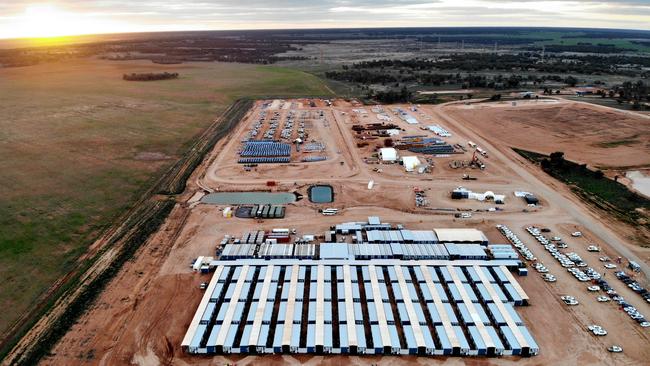Australia must improve transmission infrastructure to hit renewable targets: experts
Experts have revealed how parts of Australia’s energy infrastructure must be dramatically expanded if renewable targets are to be met.
Companies
Don't miss out on the headlines from Companies. Followed categories will be added to My News.
Transmission infrastructure must be built faster and reach further than ever before if Australia is to have any chance of meeting its renewable energy targets, industry leaders say.
While traditional energy production is concentrated in big plants near big population centres, green energy projects are widely spread across the country and require a greatly expanded transmission network at multibillion-dollar expense.

The Australian Energy Market Operator estimates Australia needs more than 10,000km of new transmission lines and the scale of some projects is staggering.
That has led to some farmers and other landholders fighting back against what they say is an unfair intrusion on their properties.
Major industry player Transgrid’s executive general manager Marie Jordan said the challenge of building transmission projects – connecting the country to renewables before the coal-fired power plants go offline, the majority within a decade – was significant but doable.
Ms Jordan pointed to NSW, saying the state was “executing one of the world’s most ambitious and rapid clean energy transitions in the globe … this is truly a leading-edge pace”.
“Part of the challenge is that now the renewable portfolio is much more spread out,” she said.
“NSW for example has had some really stable coal plants like Eraring and Liddell … all very close to the big growth centres in Sydney and Newcastle.
“Now the renewable portfolio is more spread out, we’re having to build the transmission infrastructure to collect those renewables along the way.”
Transgrid and Electranet are partnering on a 900km project called EnergyConnect between Wagga Wagga in NSW and Robertstown in SA, with a connection to Red Cliffs in Victoria.
Transgrid’s HumeLink project adds another 360km between Wagga Wagga, Bannaby and Maragle in the south of NSW.
Click here to find all the stories in Future Energy campaign
“One of the biggest challenges we’ve had is ensuring we have good social licence,” Ms Jordan said.
“There’s a lot of work to be done to ensure we can build these lines and work with the property owners and do the best we can to get this infrastructure built.”
But that has not stopped protests from some landholders who continue to demand undergrounding.
NSW Premier Chris Minns ruled that out in late August, announcing no transmission projects would be put underground due to cost.
A previous study commissioned by Transgrid in 2021 found undergrounding HumeLink would cost $11.5 billion, compared to $3.3 billion for above ground transmission.
Farmers NSW policy director Nick Savage voiced his disappointment that undergrounding has been ruled out.
“Undergrounding as an option in the bush is summarily dismissed without any consideration of the impacts of overhead wires,” he said.
“It’s on the table in urban areas that are clearly more important to the government than regional areas.”
More Coverage
Originally published as Australia must improve transmission infrastructure to hit renewable targets: experts




